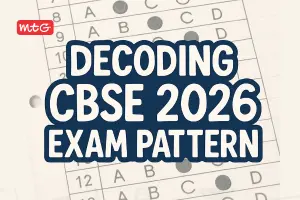
NCERT class 6 mathematics chapter 7 – “Fractions” teaches a fraction is a number representing part of a whole. The whole may be a single object or a group of objects. Students should practice multiple-choice questions (MCQs) to prepare for the objective questions that will be asked in the CBSE exams. For the CBSE exams, practice multiple-choice questions (MCQs) to prepare for the objective questions. We have offered Class 6 MCQ Questions on “Fractions” apart from offering comprehensive explanations. On many occasions, CBSE highlighted the role of MCQs as they play a major role in understanding the concepts thoroughly.
MCQs are quite different from subjective questions. Therefore, students should practice and understand how to find right answers in the MCQs. To revise the main concepts, students should practice all the MCQs with answers given. This will assist them in familiarizing with the kinds of questions that might appear in the board exams.
Previous – Integers Class 6 MCQS With Answers
Check the updated Syllabus – CBSE Class 6 Maths Syllabus 2024-25
Topics covered in “Fractions”
- Fraction on the Number Line
- Proper Fractions
- Improper and Mixed Fractions
- Equivalent Fractions
- Comparing Unlike Fractions
- Addition and Subtraction of Fractions
- Adding or subtracting like fractions
- Adding and subtracting fractions
Check complete class 6 Maths MCQ – Class 6 Mathematics MCQs with Answers
CBSE Class 6 Mathematics Fractions MCQs – PDF Download
Answers –
Summary for NCERT class 6 mathematics chapter 7 – “Fractions”
- A fraction is a number representing a part of a whole. The whole may be a single object or a group of objects.
- When expressing a situation of counting parts to write a fraction, it must be ensured that all parts are equal.
- In 5/7, 5 is called the numerator and 7 is called the denominator.
- Fractions can be shown on a number line. Every fraction has a point associated with it on the number line.
- In a proper fraction, the numerator is less than the denominator
- The fractions, where the numerator is greater than the denominator are called improper fractions.
- An improper fraction can be written as a combination of a whole and a part, and such fraction then called mixed fractions.
- Each proper or improper fraction has many equivalent fractions.
- To find an equivalent fraction of a given fraction, we may multiply or divide both the numerator and the denominator of the given fraction by the same number.
- A fraction is said to be in the simplest (or lowest) form if its numerator and the denominator have no common factor except 1.






























